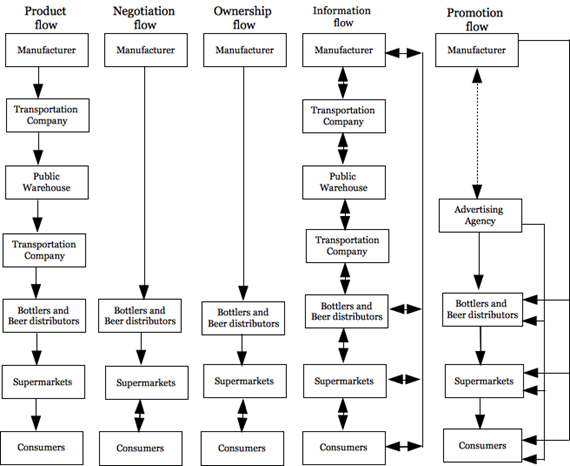10.3: Flujos en el canal de comercialización
- Page ID
- 59974
Un marco tradicional que se ha utilizado para expresar el mecanismo del canal es el concepto de flujo. Estos flujos, mencionados en la Muestra 32, reflejan los numerosos vínculos que unen a los miembros del canal y a otras agencias en la distribución de bienes y servicios. Desde la perspectiva del gestor de canales, hay cinco flujos importantes.
• Flujo de producto
• Flujo de negociación
• Flujo de propiedad
• Flujo de información
• Flujo de promoción
Estos caudales se ilustran para Perrier Water en el Exposito 32.
El flujo de producto se refiere al movimiento del producto físico desde el fabricante a través de todas las partes que toman posesión física del producto hasta llegar al consumidor final. El flujo de negociación abarca las instituciones que están asociadas con los procesos de intercambio reales. El flujo de propiedad muestra el movimiento del título a través del canal. El flujo de información identifica a los individuos que participan en el flujo de información, ya sea hacia arriba o hacia abajo del canal. Finalmente, el flujo de promoción se refiere al flujo de comunicación persuasiva en forma de publicidad, venta personal, promoción de ventas y relaciones públicas.

Exhibición 32: Cinco flujos en el canal de comercialización de Perrier Water.
Fuente: Bert Rosenbloom, Canales de mercadotecnia: A Management View, Dryden Press, Chicago, 1983, p.11.


